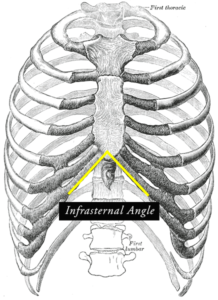Rib Flare After Pregnancy and Ribs That Stick Out After Pregnancy
Numerous factors can lead to rib flare, but I notice it in almost every postpartum woman I see. The rib cage flares and the pelvis widens as the internal organs reposition themselves to make room for the growing baby. After giving birth, some women return to their natural resting position with their pelvis and rib cage, while others don’t. That is greatly influenced by your genetics and the way your body moves naturally. You would benefit from some rib cage mobility exercises if you find that after giving birth you need a larger bra size (perhaps you were a 34 and are now a 36).
The rib cage and pelvis can be modified somewhat in terms of shape and diameter. You just need to give the body the proper stimulus; nothing in it is broken. e. , exercises, to drive the change you’re looking for.
Rib Cage Infrasternal Angle

Because it requires altering how muscles fire as opposed to their position from front to back, this type of rib flare is a little more difficult to treat.
The internal intercostals are a group of tiny muscles that run between your ribs. Together with the abdominals, these muscles cause a forced exhalation. I frequently observe that postpartum women with a wide infrasternal angle (wide ISA) of the rib cage are unable to exhale. (Meaning, it always looks like they are sucking air in. (If you don’t move certain body parts frequently, such as your ribs or spine, they can become stiff and become challenging to move out of that position. It frequently requires some manual pressure and coaxing through targeted exhalation exercises to get those ribs back down and in because pregnancy pushes them up and out (into a state of inhalation) to make room for the baby.
What Is Rib Flare and Why Should You Care?
The phrase “rib flare” is frequently used in the rehab industry. Better breathing, core strength, and posture can all be achieved by understanding what it means and how to fix it. In fact, neck, hip, and back pain may be impacted by rib flare!
Rib flare can refer to two different things, which is confusing. There are two: rib positioning and rib angle (also called the infrasternal angle or ISA). So let’s try to make sense of this by breaking it down a little.
